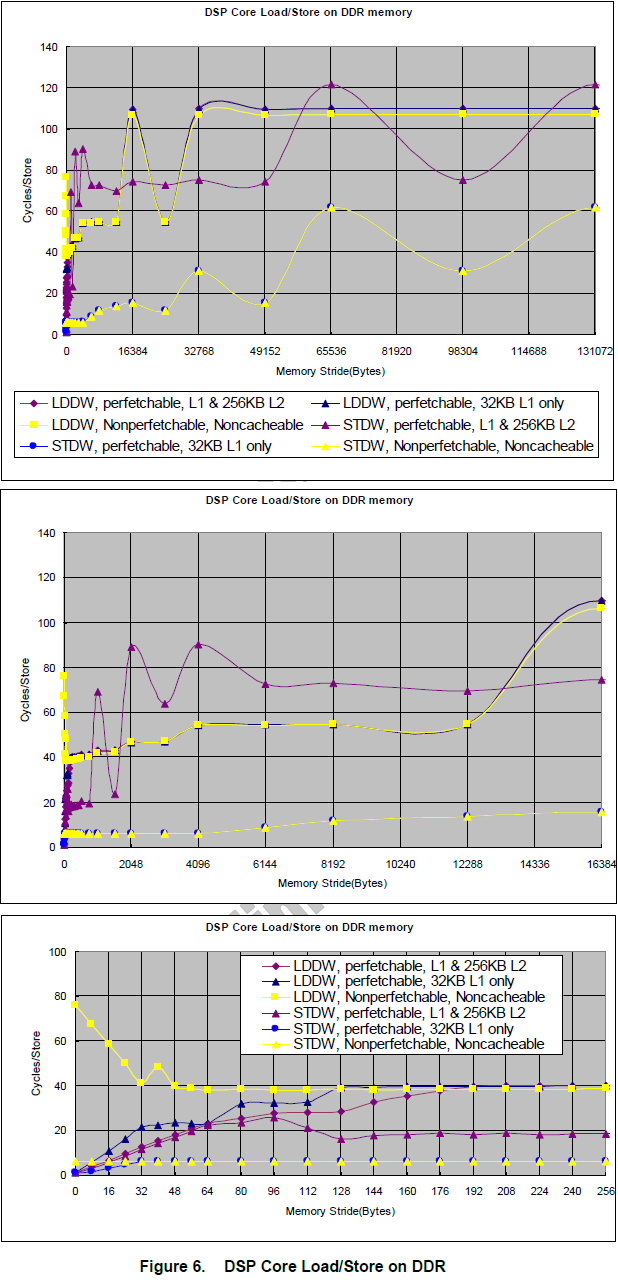Hello,
In my understanding, L2 cache enabling makes faster than disable configuration for DDR3 write access.
But C66x L2 cache enabling is slower in my test case in K2HEVM.
Question)
- L2 cache is slow in C66x. Is that right?
- Do you have any workaround?
Our test case)
unsigned char* pDst = (unsigned char*)(0x10880000);
unsigned char* pSrc = (unsigned char*)(0x80000000);
memset(pSrc, value, 512*1024);
CACHE_wbInvL2Wait();
memcpy(pDst, pSrc, 512*1024);
CACHE_wbInvL2Wait();
Other information)
Also I am referring document, it describes C6678 Memory Access Performance.
In Figure6, STDW enabled L2 Cache access is slower than Noncacheable access.(P16-17)
Best regards, RY



